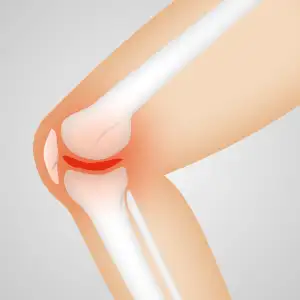Unveiling the Air Fryer Toxicity: Uncover the Potential Health Risks of Using an Air Fryer

- Exploring the Potential Health Risks Associated with Air Fryers
- The Impact of High Temperatures on Food and Health
- Examining the Effects of Acrylamide Formation in Air-Fried Foods
- Understanding the Link Between Air Fryers and Cardiovascular Health
- Addressing the Concerns of Air Fryer Emissions and Indoor Air Quality
- Tips for Minimizing Health Risks When Using an Air Fryer
Air fryers have gained immense popularity in recent years as a healthier alternative to traditional deep frying. These countertop appliances claim to provide the same crispy and delicious results with significantly less oil. However, there are growing concerns about the potential health risks associated with air fryer usage. As consumers, it is crucial to delve into these concerns and understand the implications for our well-being. In this article, we will explore the potential health risks of using an air fryer and provide tips on how to minimize these risks. By being informed, we can make better choices for our health and enjoy our culinary adventures without compromising our well-being.
Exploring the Potential Health Risks Associated with Air Fryers
Air fryers have gained popularity in recent years as a healthier alternative to traditional deep frying. However, there are concerns about the potential health risks associated with their usage. One major concern is the production of harmful compounds when food is cooked at high temperatures. Another concern is the formation of acrylamide, a chemical that can be carcinogenic when consumed in large amounts. Additionally, air-fried foods may contribute to cardiovascular health issues due to their high fat content. It is important to understand these risks and take steps to minimize them for the sake of our well-being.
The Impact of High Temperatures on Food and Health
The high temperatures used in air fryers can have a significant impact on both the food being cooked and our health. When foods are exposed to excessive heat, they can undergo chemical reactions that lead to the formation of harmful compounds. These compounds include acrylamide, which is known to be a potential carcinogen.
Additionally, the high temperatures can cause the breakdown of essential nutrients in the food, leading to a loss of nutritional value. This can be particularly concerning for individuals who rely on air fryers as their primary cooking method.
Furthermore, the intense heat can also promote the production of free radicals, which are highly reactive molecules that can damage cells and contribute to various health issues, including inflammation and oxidative stress.
It is important to be aware of these potential risks and take steps to minimize them when using an air fryer.
Examining the Effects of Acrylamide Formation in Air-Fried Foods
Acrylamide is a potentially harmful chemical that can form when starchy foods are cooked at high temperatures. This includes foods prepared in air fryers, which use hot air circulation to cook food quickly. Acrylamide has been classified as a probable human carcinogen by the International Agency for Research on Cancer (IARC). Studies have shown that long-term exposure to acrylamide may increase the risk of developing certain types of cancer, such as kidney, ovarian, and endometrial cancer. Therefore, it is important to be aware of the potential risks associated with acrylamide formation in air-fried foods and take steps to minimize exposure.
Understanding the Link Between Air Fryers and Cardiovascular Health
Air fryers have gained popularity for their ability to cook crispy and delicious food with minimal oil. However, concerns have been raised regarding the potential impact of air-fried foods on cardiovascular health. Research suggests that consuming fried foods, regardless of the cooking method, can increase the risk of heart disease and other cardiovascular conditions. The high temperatures used in air frying can lead to the formation of harmful compounds like acrylamide, which has been associated with an increased risk of developing cardiovascular problems. Additionally, air-fried foods often contain high levels of unhealthy fats and calories, which can contribute to weight gain and negatively affect heart health. It is important to consider these risks and make informed choices when incorporating air-fried foods into your diet.
Addressing the Concerns of Air Fryer Emissions and Indoor Air Quality
One of the major concerns surrounding air fryers is the emissions they release during cooking. These emissions can include volatile organic compounds (VOCs) and fine particulate matter, which can have negative effects on indoor air quality.
When food is cooked at high temperatures in an air fryer, it can release these emissions into the surrounding environment. This can be particularly concerning for individuals with respiratory conditions such as asthma or allergies, as well as for young children and the elderly.
To address these concerns, it is important to ensure proper ventilation when using an air fryer. Opening windows or using exhaust fans can help remove any emissions from the indoor environment. Additionally, placing the air fryer in a well-ventilated area, such as near a window or under a range hood, can also help minimize exposure to these emissions.
Regular cleaning of the air fryer is also crucial in maintaining good indoor air quality. Grease and oil buildup inside the appliance can contribute to the release of harmful emissions. Therefore, it is recommended to clean the air fryer thoroughly after each use according to the manufacturer's instructions.
By addressing these concerns and taking necessary precautions, individuals can enjoy the convenience of cooking with an air fryer while minimizing potential risks to their indoor air quality and overall health.
Tips for Minimizing Health Risks When Using an Air Fryer
1. Use quality cooking oil: Opt for oils with high smoke points like avocado or coconut oil to minimize the formation of harmful compounds.
2. Limit frying time and temperature: Set the air fryer to lower temperatures and reduce cooking time to minimize acrylamide formation and preserve nutrients.
3. Preheat the air fryer: Preheating helps to reduce cooking time, preventing excessive exposure of food to high temperatures.
4. Avoid overcrowding: Ensure there is enough space between food items in the air fryer basket to allow for proper airflow and even cooking.
5. Flip or shake food halfway through cooking: This helps ensure that all sides are evenly cooked and reduces the risk of overcooking or burning.
6. Choose healthier ingredients: Opt for fresh, whole foods instead of processed ones, as they are less likely to produce harmful substances when cooked.
7. Clean your air fryer regularly: Regularly clean the air fryer basket, tray, and interior to prevent the buildup of residue that can affect food quality and emit unpleasant odors.
Remember, moderation is key when using an air fryer. While it can be a convenient tool for healthier cooking, it's important to balance its usage with other cooking methods for a well-rounded diet.
In conclusion, while air fryers offer a convenient and healthier alternative to traditional frying methods, it is important to be aware of the potential health risks associated with their usage. By understanding the impact of high temperatures on food and health, as well as the formation of acrylamide in air-fried foods, we can make informed choices for our well-being. Additionally, considering the link between air fryers and cardiovascular health, as well as addressing concerns about emissions and indoor air quality, can further minimize potential risks. Ultimately, by following proper guidelines and using moderation when using an air fryer, we can enjoy delicious and healthier meals without compromising our health.
Published: 12. 12. 2023
Category: Health



